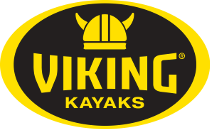Profish Reload Review - Shelley Bradish-Cooney
3:07PM 4th Mar 14
First Glance
It was with eager anticipation that I first laid eyes on the new Reload from Viking Kayaks. Since the launch of the Viking 400 in 2010, the guys have been working on this new design. My first impression is that it is a version of the 400, only longer and with a different bow. And the massive Tackle Pod™ – bloody hell but you could carry a lot of gear in that.
The first thing that came to mind was fitting a pump and running the Tackle Pod™ wet as a live bait tank. When I learned that the weight was 29 kg I thought “yahoo”, not much heavier than the 24 kg of the 400. Best of all are the bait well features behind the seat. These are designed to provide readily accessible storage, but also have hull fittings that mean they will drain (ie not trap water when going out through the surf). I have also found that you can fill them with sea water to help quick thaw your pillies (if you have not taken them out of the freezer the night before to thaw).
The size of the transducer scupper is massive – created to take the largest transducer currently in the market, the Dragonfly by Raymarine. It seems a bit over the top to the non fisho, but this is after all a serious fishing kayak, and it makes sense to ensure that it can accommodate the latest technology.
The most important part, how does it feel when you sit in it? Bloody marvellous. I can spend up to 9 hours when I am out fishing, and this seat is moulded with a negative recess that means there is not any pressure on the bones in your pelvis. The seat back design means that you get great lumbar support, and I would say that for my eleventh kayak, this is by far the most comfortable.
Stability, Speed and Manoeuvrability
The Reload’s stability is brilliant. With a width of 75 cm this kayak is the narrowest of the Viking fleet of fishing kayaks, and the scalloped sides mean that you can really develop an effective paddlestroke. With my first decent snapper on board I realised that boating good fish was easy, you just need to make sure that you maintain the technique of keeping your rod tip near the bow of the kayak.
The design team has put serious effort into making the rudder more sensitive. If you look at other rudders in the Viking fleet you will notice that this rudder has a wider blade surface below the water line, and it sits further back from the kayak. I used some silicone spray to make the rudder pedals move more smoothly along the plastic track – this has become part of my maintenance program (along with a good freshwater rinse to get any sand out that might have come in on a surf transition). Overall the impression is that this kayak is quick to do what you ask.
On the question of speed, I can say that in my experience this kayak is about 1 km/hr faster than the 400. This makes sense, it is 4.5 metres long, and with a longer water line length it usually means the kayak is faster. I love the way it moves through the water, the bow design means that it parts the water rather than riding up over the waves and creating that annoying hull slap that you can get with some kayaks. I can comfortably maintain a hull speed of 6-7 km/hr for extended paddling distances, and it tracks very well. In rough conditions the paddler does not get as wet as on some kayaks because of the way the hull diverts the water in choppy conditions.
With surf transitions I really appreciate the faster hull speed, so when I get a break I can really put the hammer down. The kayak surfs well, and to maximize performance I have mounted some stainless saddles to allow the use of surf straps.
Cruising/Storage
There is plenty of room to stow your gear, and with a forward hatch design you can even stow your c-tug trolley in the hull. This kayak was designed with plenty of buoyancy, so it can take massive fish on board and you will not get a wet seat. Later in the year when I detail my live-bait tank, I have tested the tackle pod full of seat water, and the kayak still sits well in the water (and still with no wet seat for the paddler).
The Tackle Pod™ means that prior to transporting the kayak you can remove part of the weight of the kayak, making it easier to haul up the beach or to get your kayak on the roof of your vehicle. I have learned how to get the kayak up on the roof of the car single handed, using a bar that extends the width of the roof rack bar. I strongly suggest that you talk to the gang at Viking prior to getting a roof rack system. It is important to make sure that you get wide enough roof racks on your vehicle as these help support the kayak when you are getting it on and off.

The Tackle Pod™ is interchangeable with a Kid Pod™ – basically the same shape but with no transducer scupper and with a moulded seat to support a child sitting in front of the paddler. The Kid Pod™ is also a good platform for standing on the kayak to fly fish in sheltered waters.
Layout
The centrally placed handles allow you to really get a firm hold on the kayak. The angle of the rod holders is well positioned, and the in-hull forward rod holders actually allow you to have a rod in the forward holder and still be able to paddle. This is convenient if you need to quickly change position when fishing without having to shift your rods. The rod slots in front of the cockpit allow you to easily stow rods prior to surf transitions.
I have mounted a wide Railblaza track that allows me to mount two rod holders, a camera and still have room for a deck mounted VHF (the bigger VHF provides me with 25 watts of transmission power for my longer off-shore paddles, but detaches for when I am not needing to use that radio).
The Bottom Line
The manufacturer has claimed this is the finest fishing kayak available. I would have to agree with them. It is responsive and fast, with plenty of storage for the most tackle obsessed fisho. I like the width of the kayak, it paddles well and handles windy conditions without any annoying hull slap.
Some things to improve would be the addition of a paddle keeper on the right hand side of the kayak. I like having the option to park my paddle on the right or the left hand side, and only having a paddle keeper on the same side as the running rig? That is easily fixed, and I have already moved my fish stringer keeper up, and created a paddle keeper on the right hand side. Best of all I can get this kayak on and off the car by myself. Removing the Tackle Pod™ first means you are moving less weight on to the roof of the car. The large handles make lifting much easier. They have kept the soft rubber handles at the bow and the stern of the kayak so pulling it up the beach is comfortable.
To the design team at Viking – well done. The Reload is well thought out, and I would recommend this as a kayak for someone who just wanted “one kayak” to fish from or just to paddle. I think people that have come from sit-in’s will appreciate the scalloped sides designed for improved paddle strokes. This kayak takes the same Chill Pod™ as the 400, so for those wanting to keep a smaller kayak for short excursions, your Chill Pod™ is transferable.





